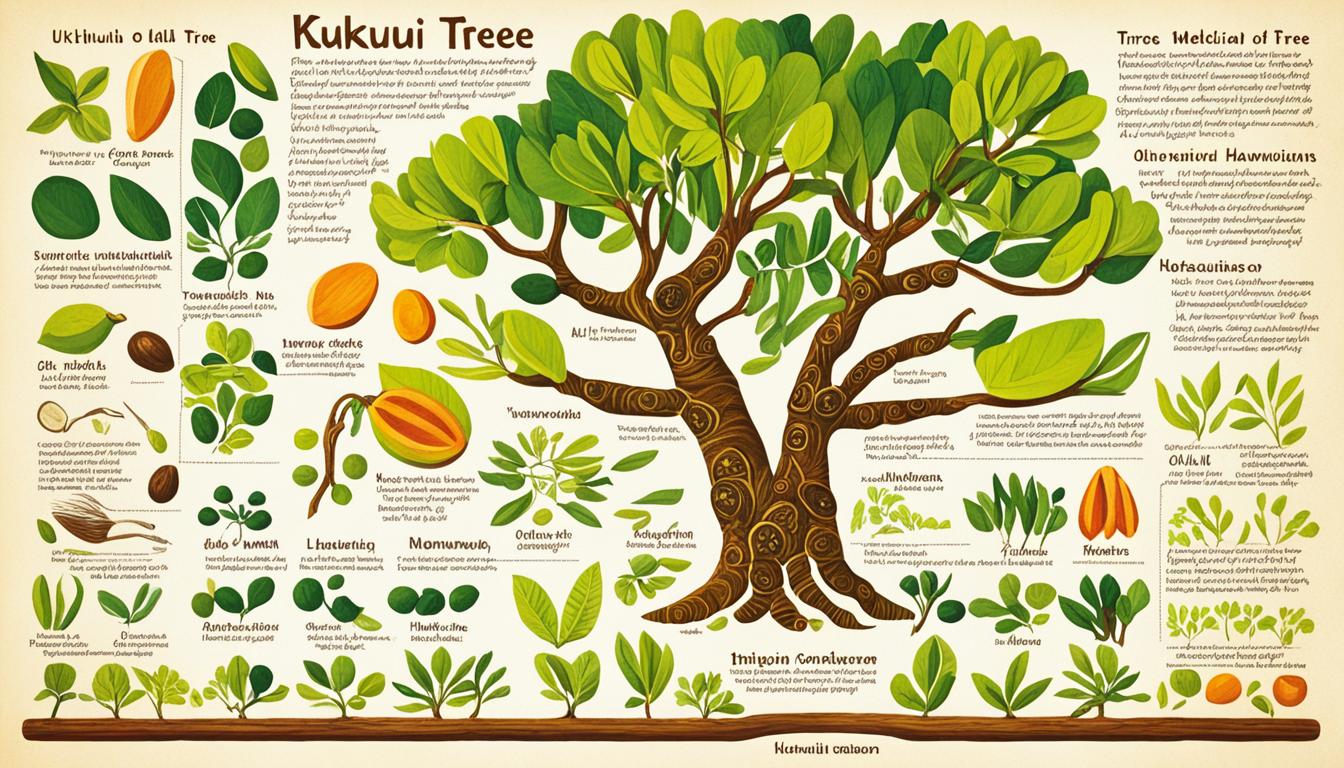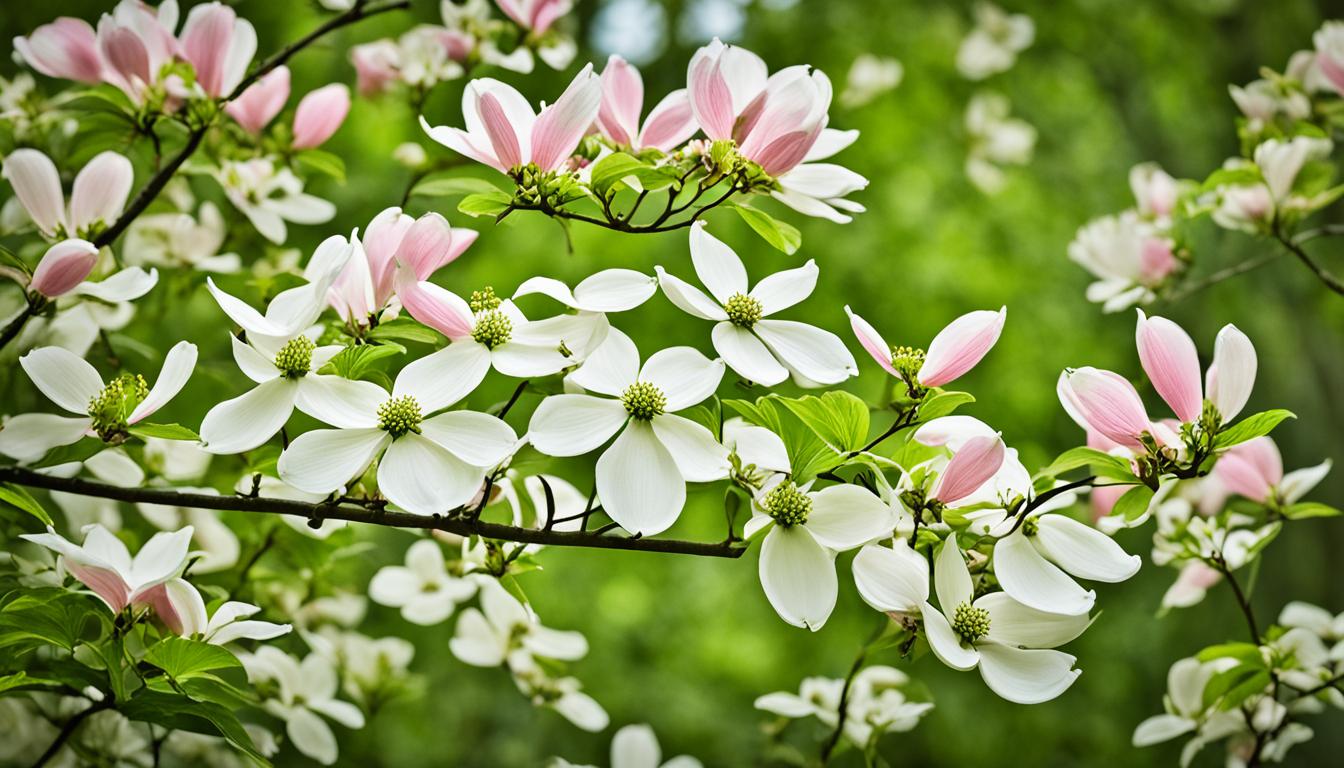The Hawaii state tree, the kukui nut tree, stands not merely as a botanical figure but also as an emblem of profound cultural significance and symbolism. Imbued with a history as rich as the volcanic soil in which it thrives, the kukui nut tree—or candlenut tree—reverberates through the annals of Hawaiian traditions. As one of the revered “canoe plants” brought by Polynesians, this majestic tree’s presence in the Hawaiian archipelago is a testament to the voyaging heritage and the intricate relationship between the land and its people.
With its large, light-green leaves and stature reaching up to the Pacific sky, the kukui nut tree’s biological magnificence mirrors the diversity of Hawaii’s ecosystems. But beyond its physical allure, the tree weaves a narrative of utility, spirituality, and continuity that resonates with the enduring spirit of Aloha.
Key Takeaways
- The kukui nut tree is integral to Hawaiian heritage and embodies the islands’ spirit.
- Known for its significance in Polynesian migration, it is celebrated as one of the essential canoe plants.
- The tree’s cultural importance is reflected through its symbolic meanings and its role in traditional Hawaiian rituals.
- From a utilitarian perspective, the kukui nut tree has numerous applications ranging from medicinal to artisanal crafts.
- Embracing the tree’s cultural significance, Hawaii honors both the past and the promise of the future.
The Kukui Nut Tree: A Historical Canoe Plant of Hawaii
The kukui nut tree, known to scientists as Aleurites moluccanus, stands as a venerable beacon of Hawaiian heritage. Beyond its biological characteristics, this historical plant holds an esteemed place in the anthology of plants crucial to the Polynesian migration—a journey steeped in survival, discovery, and the intricate tapestry of a culture’s tether to the natural world.
Introduction to the Kukui Nut Tree
Enthroned within the Hawaiian ecosystem, the kukui nut tree presents itself as more than just a plant; it’s a living chronicle of the islands’ past. Each tree, with its broad pale-green leaves, showcasing a serene grandeur, reflects a story of utility, spirituality, and life. As the Polynesians traversed vast ocean stretches, the kukui was among the precious ‘canoe plants’ they carried to the new lands, essential for their nascent communities.
Importance of ‘Canoe Plants’ in Polynesian Migration
Critical to the Polynesians’ voyaging success, ‘canoe plants’ like the kukui were the bedrock of societal establishment upon arrival in Hawaii. These plants laid the foundation for sustainable agriculture, medicine, and spiritual practices. They afforded the early settlers the biological resources necessary to thrive in their new environment, earning the kukui a place of honor in the pantheon of Polynesian heritage.
Biological Characteristics of the Kukui Nut Tree
From its oval-shaped canopy to the towering heights nearing 80 feet, the kukui nut tree’s biological characteristics have made it a staple in Hawaii’s lowland, windward valley bottoms. The tree’s resilience and utility mirror the qualities prized by those who planted it centuries ago, marking it as a key species in understanding Hawaii’s verdant landscapes.
What Is Hawaii’s State Tree and Its Cultural Importance
At the heart of Hawaiian culture stands the venerable kukui nut tree, a symbol deeply entrenched in the archipelago’s history and traditions. As Hawaii’s state tree, its significance extends far beyond its biological presence, as it embodies the very essence of protection, peace, and spiritual enlightenment—tenets highly revered in Hawaiian society.
Symbolism of Protection and Enlightenment
The kukui nut tree, with its comforting shade and lush foliage, has long been a protector of the islands’ inhabitants. Its presence suggests tranquility and a guiding light, much like the way its nuts were once burned to provide illumination. This image of radiance emulating from the kukui’s light encapsulates the tree’s role as a beacon of enlightenment, lighting paths and inspiring minds through generations.

The Kukui Nut in Rituals and Traditions
Embedded in every layer of Hawaiian ritual and ceremony, the kukui nut is more than a simple seed—it is an artifact of cultural allegiance. From the soft chants of hula dances to the solemnity of sacred prayers, kukui nut rituals are ranged through diverse facets, securing the seeds’ place in Hawaii’s spiritual landscape.
Kukui Nut Lei: A Symbol of Aloha
The crafting of a kukui nut lei epitomizes the aloha spirit, intertwining the physical beauty of polished seeds with the intangible warmth of Hawaiian affection. These leis serve not merely as ornaments but as emblematic gestures of goodwill and respect at ceremonial gatherings. They capture the respectful bond between giver and recipient, infusing traditional events with a profound sense of unity and sincerity. The kukui nut lei signifies a circle of love, bound tightly with the same values that make Hawaii’s state tree culturally imperative.
Utilitarian and Medicinal Uses of the Kukui Nut Tree

The kukui nut tree is a beacon of multifunctional use, showcasing an array of utilitarian purposes that extend beyond cultural symbolism. Its nuts, oil, and other components serve numerous practical and medicinal benefits, integral to the traditional lifestyles of Hawaii. Take the kukui nut oil, a multi-purpose elixir, revered for its ability to nurture the skin, soothe discomfort, and even fortify various products. Let’s delve into the numerous benefits and uses that this esteemed tree offers.
- Fishermen have long valued the tree’s oil for coating their nets, enhancing durability and longevity.
- The remarkable versatility of kukui nut oil sees it as a relief for sore muscles and a healing aid for burns and other wounds.
- In the culinary sphere, the roasted nut insides are transformed into a flavorful spice called ‘inamona’, a testament to the kukui nut tree uses in traditional Hawaiian cuisine.
But it doesn’t end there. The benefits of the kukui nut tree permeate various facets of Hawaiian life, even entering the realm of personal care with its oil being a key ingredient in soaps, lotions, and hair care products. To illustrate the breadth of the kukui nut tree’s offerings, here’s a table detailng its myriad uses:
| Part of Kukui Nut Tree | Utilitarian Uses | Medicinal Benefits |
|---|---|---|
| Nut Oil | Material for lighting, wood polishing, waterproofing | Skin moisturizer, wound healing, muscle pain relief |
| Outer Shell | Traditional dye for tattoos | — |
| Roasted Nuts | Spice for dishes like inamona | — |
| Leaves | Craft material | Remedial teas for various ailments |
| Wood and Sap | Carvings and canoes | Salves and topical treatments |
This table represents but a fraction of how deeply ingrained the utilitarian purposes and medicinal benefits of the kukui nut tree are in Hawaiian culture. Each part of the tree, from its robust wood to the versatile leaves and nourishing oils, contributes to the holistic lifestyle treasured on the islands. Indeed, the kukui nut tree’s uses are as bountiful as they are beneficial, firmly entwined with the essence and vitality of Hawaii.
A Reflection of Hawaii’s Ecosystem and Spirit of Aloha
In the rich tapestry of Hawaiian flora, the kukui nut tree stands as a quintessential emblem of the islands’ ecological splendor. Acting as a living symbol, it mirrors Hawaii’s distinctive ecosystem – a complex harmony of plants and animals unique to the archipelago. The kukui nut tree, steadfast in its natural habitat, has grown alongside streams and in the moist soils of the forested uplands, demonstrating an adaptability that is as much a part of Hawaii as the ebb and flow of its tides.
Throughout the centuries, the integration of the kukui nut tree in the daily lives of Native Hawaiians has marked it as a profound reflection of the spirit of aloha. This concept, often distilled as love and kindness, is, in truth, a deeper representation of a connected existence, embracing respect, unity, and harmony with nature. The kukui nut tree’s uses, from providing nourishment and medicinal remedies to its ceremonial applications, exhibit a relationship with the environment that is built on sustainability and reverence.
The reflection of Hawaii found within the leaves and roots of the kukui nut tree emerges not only from its physical presence but from the intangible lessons it imparts. It underscores the importance of protection, evokes a sense of enlightenment, and champions peace – qualities that align with the true spirit of aloha. Through an understanding of the kukui nut tree and its intrinsic role within Hawaiian culture, we gain insight into an ecosystem and a way of life that challenges us to embody these values in our interactions with the world around us.





